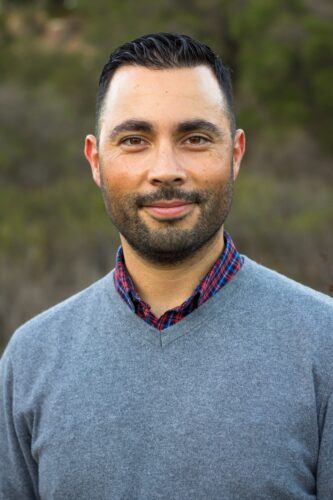David-James Gonzales is an Assistant Professor of History at Brigham Young University and the host of New Books in Latino Studies. He is a historian of migration, urbanization, and social movements in the U.S., and specializes in Latina/o/x politics and social movements.
I began teaching with the Wikipedia assignment in the spring of 2018. At the time, I sought an alternative to the standard term paper that had been, and likely remains, the staple of most college history courses. My motivation was to find an assignment that students would enjoy completing and that I would enjoy grading. Over my previous six years of university teaching, I developed a dread for grading term papers as it became apparent that most students either did not have the time or did not see the point in writing a well-researched argumentative paper. Moreover, I noticed that many of my students were developing bad habits in their rush to complete term papers, including committing to an argument before establishing a research question, cherry-picking sources that confirmed unfounded assumptions, and ignoring counterevidence. I desired an assignment that would reinforce the teaching of historical methodology and leverage the accessibility of the internet, allowing students to reach a broader audience, which I hoped would motivate them to take greater pride in their work.

After speaking with colleagues and searching the internet for ideas, I stumbled upon the Wiki Education website and found the Wikipedia assignment. Despite my lack of experience editing or authoring Wikipedia pages, I was drawn to the assignment because it facilitates experiential learning by requiring students to apply the knowledge acquired through course readings, lectures, and research to a public-facing project. In my US history survey course, for example, I use the Wikipedia assignment instead of a final paper to evaluate students’ ability to do the work of a historian by choosing a topic, developing a research question, selecting and evaluating sources, and writing a historical narrative.
I also use the assignment to help students build social and professional skills applicable beyond the classroom. To promote peer collaboration in larger classes, I have students work in pairs. Admittedly, most groan when they hear this is a group project; however, by the end of the semester, they overwhelmingly express appreciation for their partner and the flexibility the assignment provides to capitalize on each person’s strengths. For example, those interested in computer programming and coding tend to enjoy learning about wikitext and the formatting aspects of the assignment. For others, conducting research, locating images, videos, and sound clips, or writing the text of the article is preferred. While I require them to work in pairs, students decide how to manage their workload by deciding who does what and evaluating each other’s performance at the end of the term.
To facilitate student-teacher mentoring, I require students to meet with me throughout the semester to approve their topics and receive feedback on sources and drafts. These interactions help break down the reluctance and intimidation students feel towards interacting with authority figures and often lead to future opportunities to advise them about their degree progress, university resources, and career opportunities. To teach information and media literacy, I have students turn in an annotated bibliography halfway through the term. Although not a required part of the Wikipedia assignment, I find that it reinforces the dashboard’s trainings on evaluating sources according to the credibility of the author and publication. It also teaches students to pay as much, if not more, attention to the sources used in a publication than the text itself.
I have used the Wikipedia assignment in thirteen courses over the past six years and have been thrilled by the results. Overall, my students have published 180 new articles, edited an additional 492 articles, and added 8,500 references to Wikipedia! Incredibly, their work has received over 13 million views as of spring 2024. But the best part is that my students admit they enjoy the assignment.
Here are a few examples of what students appreciate about the Wikipedia assignment:
“The Wikipedia project we had over the course of the semester was very effective in getting us all to participate in the learning process. It helped us to be more involved in research and in learning how to be historians.”
“I loved the Wikipedia project we worked on throughout the semester. We got to pick our own topic and I appreciated what it taught me about doing accurate historical research.”
“I loved the Wikipedia Assignment in this class and using our research skills to be able to put something useful out onto the internet.”
“The incorporation of making a Wikipedia article was the best way to actually be part of making and recording history.”
As reflected in the comments above, students relish the “hands-on” opportunity provided by the Wikipedia assignment to apply what they learn through a medium that allows them to create something that makes a public contribution beyond the classroom. And this is the primary reason why I continue to teach with Wikipedia; it encourages students to become more informed knowledge producers rather than passive consumers of information.
Interested in incorporating a Wikipedia assignment into your courses? Visit teach.wikiedu.org to learn more about the free resources, digital tools, and staff support that Wiki Education offers to postsecondary instructors in the United States and Canada.
